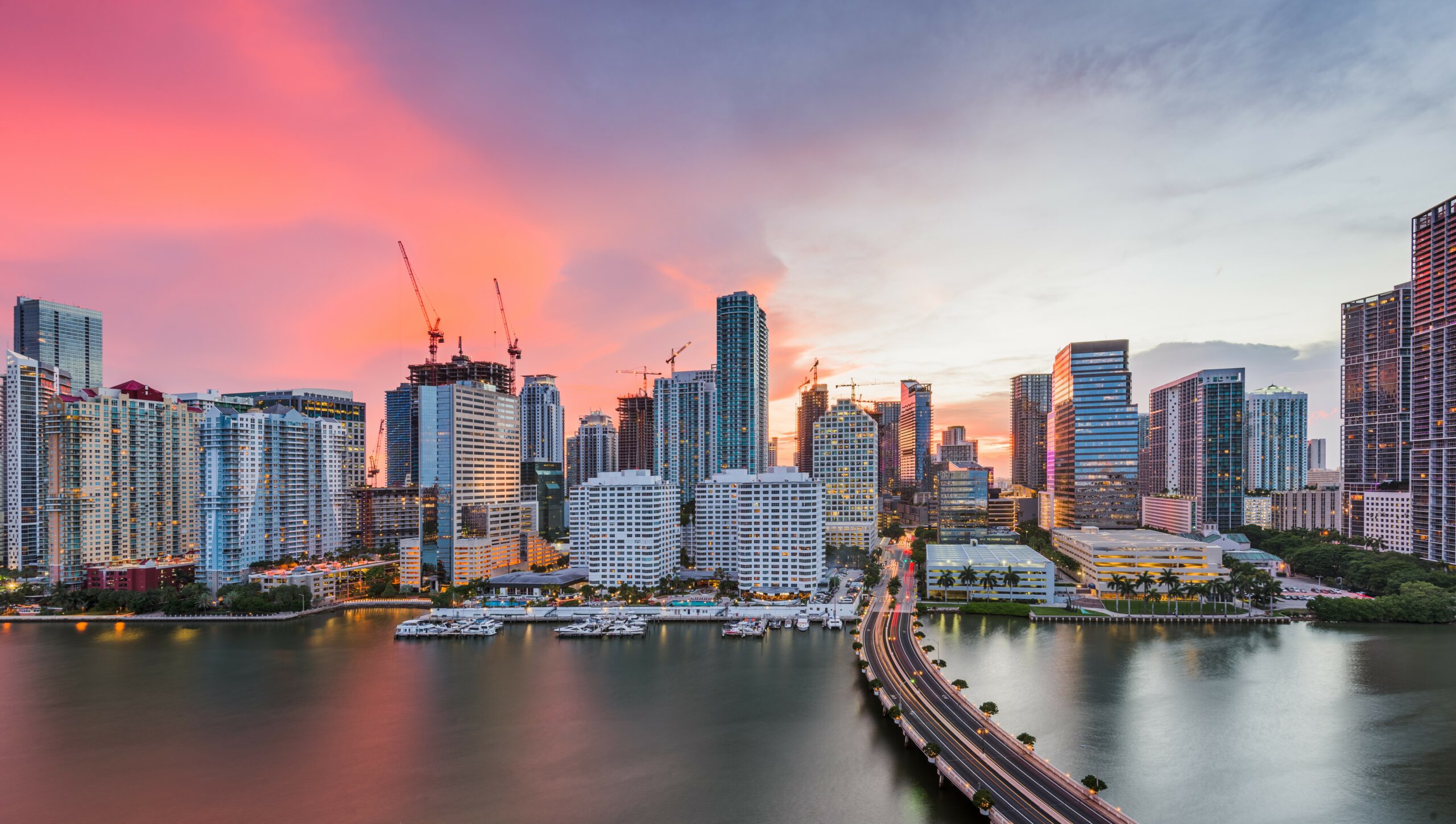Our rise in tech prominence is a symptom of this growth, not a cause, professors Alejandro Portes of UM and Ariel C. Armony of Pittsburgh assert in their new book.
By Riley Kaminer
Since the pandemic, it feels like Miami has been growing at a dizzying pace. That’s all the reason to pause for a moment and take stock of our growth as a metropolitan region. Even more important: contextualize our city’s growth globally over the last few decades.

One great way to do that is by picking up a copy of Emerging Global Cities: Origin, Structure, and Significance by the University of Miami professor Alejandro Portes and the University of Pittsburgh’s Ariel C. Armony.
What is an emerging global city?
The authors contrast certain already-established global cities – most famously New York, London, and Tokyo – with three new, emerging global cities: Dubai, Miami, and Singapore. Beyond just these cities sharing similar skylines, they all have experienced growth thanks to excellence in a few major sectors:
- Growth in their financial/banking industry (Brickell, in the case of Miami)
- Facilitating long-distance trade (PortMiami and Miami International Airport)
- A rapidly-expanding construction and real estate industry
- Art and culture (centered around Art Basel)

All of these cities also had leaders who very explicitly worked to turn these cities global: “an iron will to move forward in the global economy,” Portes described. In the case of Miami, there was not one specific individual – but rather a class of leaders. “Miami had Cuban exile bankers who immediately recognized Miami’s strategic location,” said Portes.
What role does technology play in the rise of these emerging global cities?
For Portes and Armony, tech is more a result of these cities’ growth rather than a cause of it. “Technology has not been the driver of these cities’ global positioning,” acknowledged Armony. “The emphasis on technology has come later. But the question looking forward is: How do these cities approach the future of tech development?”
Armony noted that Singapore has placed a major emphasis on its system of higher education. That has already paid dividends for the positioning of its ports, which are seen as some of the highest tech in the world. “That was a very smart thing to do,” he said. “What we are seeing are, you know, these important efforts to see if the cities can find a niche in the technology scene.”
He added that Miami has already shown early traction in the fintech and healthtech spaces, noting that our levels of VC funding now compete with more active ecosystems like Austin’s. “That’s pretty good – Miami is getting there but is still far away from Silicon Valley.”
Both authors believe that for Miami’s tech scene to truly grow, we need to double down on our local universities. “Tech requires deep talent,” said Armony. “This talent has started to come here, but it’s unclear whether it will stay.”

“The great opportunity for Miami to leapfrog in tech is to attract and work much more closely with the talent in Latin America,” Armony continued. “That’s the recipe. It’s an obvious recipe, but one that I still think that the city has a lot of room to improve in – in terms of partnerships, mobility, and collaboration.”
Portes noted that the University of Miami is already working on building these bridges, with its President having created a hemispheric consortium of 23 universities. This echoes initiatives from private organizations such as Mana Tech. “Miami is moving in the right direction,” said Portes. “But it is still in the process of doing so.”
How can Miami’s growth be sustainable?
Miami struggles from extreme inequality, with the wealthiest areas of the city having median annual incomes around $130,000 while the lowest – just a 15 minute drive away – has $29,000. But the authors told Refresh Miami that this is somewhat of an inevitability.
“What is happening in Miami is a copy of what is happening in London and other global cities,” asserted Portes. The difference is that this phenomenon is new in Miami, and therefore perhaps more shocking. “Miami was fairly flat in terms of income distribution and housing was affordable,” he said. “It’s not that the old Miami went down, it’s that the new Miami went up fast.”
What are some opportunities for Miami’s tech scene?
Armony shared that Miami has an opportunity to improve its urban design, with a particular focus on its transportation system. Equally, he pointed out the opportunity to pioneer the deployment of technologies to combat climate change. “It became clear that there was very little that was being done on the technical, scientific, and policy side of addressing rising sea levels. This is an area with tremendous tech possibilities.”
It’s also a good example of the important relationship between tech and public policy. “We cannot keep talking about tech isolated from public policy,” Armony said. “The alignment of these two forces in Miami could do tremendous things.”
READ MORE IN REFRESH MIAMI:
- Mana Tech is connecting the Americas, with Downtown Miami as the hub. Here’s how
- TheVentureCity’s Laura González-Estéfani on building bridges between Miami and Madrid tech
- South Florida is a hotbed for climate tech innovation. Here are 5 reasons why
- Miami shines, ranking as a top ecosystem in the world





